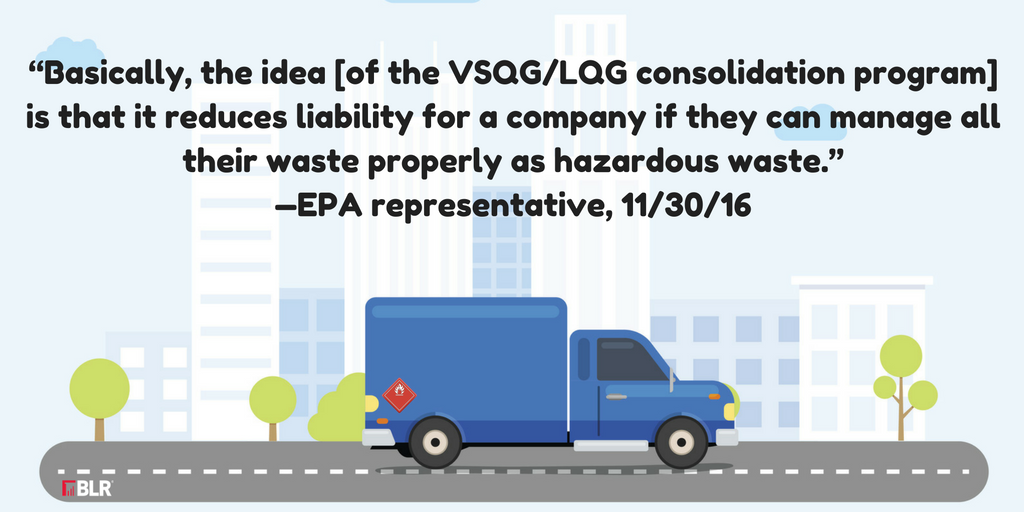The final Hazardous Waste Generator Improvements Rule (Rule), published in the Federal Register on November 28, 2016, contains two of what the U.S. Environmental Protection Agency (EPA) refers to as “voluntary programs”—meaning that generators of hazardous waste have the choice of whether to comply with the new programs’ requirements. The first program is a set of provisions that allows a very small quantity generator (VSQG) (the Rule’s new name for the current “conditionally exempt small quantity generator”) and a small quantity generator (SQG) to maintain their generator class despite a 1-month generation of hazardous waste that exceeds the limit assigned to their class and bumps them up into a larger category of generator.
The second program allows a large quantity generator (LQG) to accumulate on-site without a storage permit the hazardous waste received from a VSQG provided the LQG is under the same ownership as the VSQG and certain conditions are met. There is no limit on the amount or types of hazardous waste that an LQG can receive from VSQGs. In its preamble to the Rule, the EPA almost waxes poetic about the environmental, economical, and administrative advantages of this hazardous waste consolidation program and how stakeholders commenting on the proposed Rule embraced the program enthusiastically. So, what is this marvelous new program and how does it work? Let’s find out.

